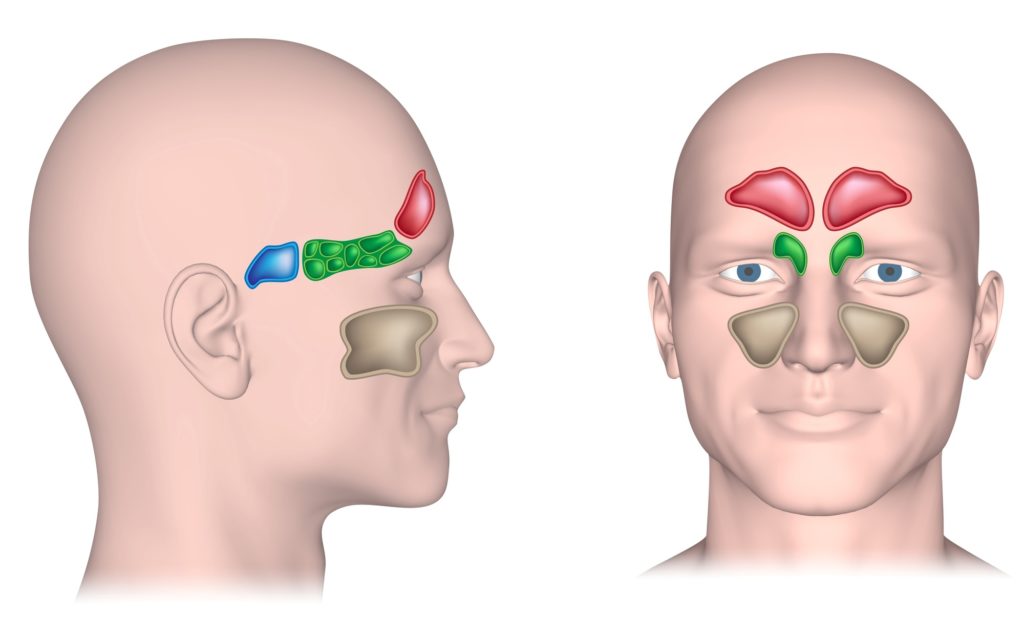
A 2017 study discovered that from 2011 to 2014, the number of balloon sinuplasty procedures done in the US increased by 59 percent every year.
Balloon sinuplasty is a relatively new surgery, having been OKed in 2005 by the FDA. It’s also commonly known as the “smart sinus” surgical procedure.
Balloon sinuplasty refers to a form of endoscopic nasal surgical procedure, which makes use of small balloon catheters to inflate and drain the big nasal sinuses.
It is normally used to treat incidences of severe sinus inflammation (rhinosinusitis) and nasal blockage. The procedure was fashioned out of angioplasty, which uses balloon catheters to dilate congested or damaged blood vessels around the heart.
So what’s balloon sinuplasty? Well, here are 10 things you should know about this procedure.
What is Balloon Sinuplasty?
Balloon sinuplasty is basically an in-office surgery that’s done on patients with sinus blockages (like tissues, bone, foreign objects, and growths).
The surgery is also carried out on people who haven’t had relief from sinus symptoms through more common treatment options like surgery or medication. It can provide relief to patients with sinus symptoms and help them take breaths more comfortably.
How Does Balloon Sinuplasty Work?
A doctor inserts a wire guide catheter fitted with a small balloon through the nose to access the blocked sinus vessel. Then the balloon is deflated and withdrawn to leave an open sinus vessel. This restores normal sinus function and drainage.
This procedure is done under general anesthesia.
Who’s a Good Candidate for This Surgery?
If you have chronic sinusitis and aren’t responding positively to medicine, or have recurrent severe rhinosinusitis, you might be a perfect balloon sinuplasty candidate.
Here are some chronic symptoms you could be experiencing:
- Fatigue
- Loss of sense of taste or smell
- Tooth pain
- Nasal discharge
- Headaches
- Post nasal drainage
- Nasal blockage and congestion
- Facial pressure and pain
What to Expect
Before the procedure, a doctor will spray the patient’s nose with numbing medications and decongestants. They’ll soak a cotton ball in medication, place it close to the sinus, and wait around 20 minutes for the most effective anesthesia.
In many cases, extra local anesthetic is used until the nose is fully numb. With an endoscope, the doctor examines the patient’s nose and puts the catheter in the sinus, ensuring it’s properly placed.
Sometimes, the doctor may make a small hole into the sinus through the lip. When the balloon is inflated, the patient will feel strong pressure and a cracking sound may be produced. This is nothing to worry about. The balloon remains inflated for 5 to 10 seconds and then withdrawn.
Balloon Sinuplasty Cost
A balloon sinuplasty can cost between $3,000 and $7,000, depending upon the doctor performing the procedure. An in-office procedure often costs much less than one done in a surgery room.
Since the surgery is fairly new, some insurance firms still classify balloon sinuplasty as “not medically necessary” or experimental. Since 2014, however, almost all medical insurance companies have been able to cover the cost of balloon sinuplasty.
Balloon Sinuplasty Benefits
Balloon sinuplasty has been proven to be safe and effective for the most part. Here are some benefits of this procedure.
Minimally Invasive
This surgery uses tiny and flexible tools that the specialist inserts through the nostrils to comfortably open blocked sinus passageways. Usually, there’s no tissue or bone removal.
Improved Recovery Time
This procedure provides fast relief. However, the recovery time varies between patients. In most cases, you can expect to resume your normal daily schedule within 24 hours.
Reduced Bleeding
As no bone or tissue is removed, this procedure results in decreased bleeding unlike in regular sinus procedures. It also doesn’t need uncomfortable nasal packing.
Convenient
Balloon sinuplasty is done quickly and comfortably in the doctor’s office.
Is Balloon Sinuplasty Safe?
This procedure is easily and safely done by sinus specialists in doctor offices across the US.
In-office balloon sinuplasty can be carried out under local anesthesia with oral medicines to help the patient relax. It can also be done under local anesthesia using IV sedation if the patient wants to avoid discomfort.
The patient and their doctor will discuss this decision.
Risks and Complications
Balloon sinuplasty comes with risks similar to those of other sinus surgeries. Intracranial complications are the worst.
In such cases, the procedure interferes with the connection between the brain and the nose, potentially causing brain fluid to leak into the nose.
Intracranial complications are fairly rare and are usually resolved even before the surgery is completed.
There’s also the possibility that your nose might slightly change in appearance. Sometimes the swelling fails to subside for days, or your nose looks different after the swelling clears.
If you’re unable to properly cleanse the area, an infection could occur that requires medical care. And while most sinus procedures enhance your sense of smell, sometimes balloon sinuplasty actually worsens it.
Balloon Sinuplasty Recovery and Aftercare
Most patients can get home a couple of hours after balloon sinuplasty and return to their normal routine within 24 -48 hours.
Generally, balloon sinuplasty tends to result in grogginess, tiredness, congestion, tenderness, and bloody drainage within a week of surgery.
Your doctor might advise against blowing your nose for a day or two after the procedure. Often, it’s advisable to avoid exhausting tasks for at least one week after surgery.
Many patients find it useful to rest or sleep with their neck and head in a raised position to aid drainage. And non-prescription inflammatory drugs can help to manage uncomfortable or irritating symptoms afterward.
Balloon Sinuplasty Outlook
Due to the high balloon sinuplasty success rate, this surgery is a promising remedy for patients with chronic sinus issues. While the procedure is fairly new, it’s a safe and valid option for anyone who’s tried other sinus treatments.
In fact, a follow-up study revealed that people who have balloon sinuplasty get results that last two years at least.
Summary
If you have any ongoing sinus issues, consulting a board-certified otolaryngologist would be a good idea. They’ll get on top of these problems and help you decide whether balloon sinuplasty is best for you.
For other useful posts on health and wellness, be sure to check out our blog.

